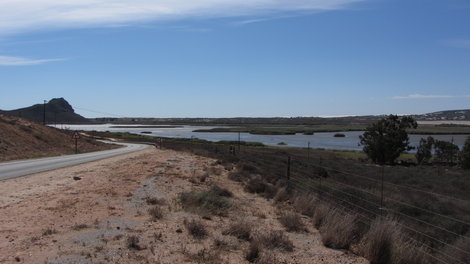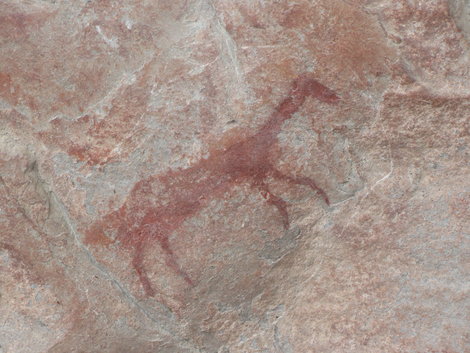Page path:
R A I N - Project 1
Lacustrine Sediments: High-resolution Paleoenvironmental Archives
The investigation of lacustrine sediments provides multiple parameters that help to understand paleoclimatic and paleoenvironmental changes. The main aim of SP1 is to obtain several proxies from terrestrial archives, i.e., coastal lakes and wetlands, across different rainfall zones of South Africa establishing a W-E-transect of sediment records. The relationship of terrestrial evidence to marine environmental reconstructions will be investigated and compared to the global picture. To obtain a valid chronology, various dating methods will be used. Based on acoustic data acquired during pre-site surveys, a sediment thickness of 7-10 m covering the Holocene is expected for all sites.
In October 2013, the first coring campaign will take place in the Wilderness region (southern Cape) which is characterized by year-round rainfall. The work at Verlorenvlei (western Cape) which is located in the semi-arid to arid winter rainfall zone is anticipated for May 2014. The project is complemented by investigations on existing sediment cores from the Mfabeni Mire (KwaZulu-Natal) that receives rainfall predominantly during the summer months.
Subsequent to the field campaigns, the core opening and documentation will be performed in Jena (Germany). In SP1, we focus on the application of the following analytical methods: inductively coupled plasma optical emission spectrometry (ICP-OES), grain size analysis, magnetic susceptibility, X-ray diffraction (XRD), 14C, 137Cs and 210Pb dating, optical dating (e.g., OSL), magnetostratigraphy and X-ray fluorescence scanning (XRF). In addition, identical sediment sub-samples will be provided for SP2 and SP3.
Subsequent to the data collection, the interpretation and comparison with the marine data gained by our colleagues of SP4, is scheduled. Moreover, the international exchange of staff and students is intended as capacity building activities (SP5).
In October 2013, the first coring campaign will take place in the Wilderness region (southern Cape) which is characterized by year-round rainfall. The work at Verlorenvlei (western Cape) which is located in the semi-arid to arid winter rainfall zone is anticipated for May 2014. The project is complemented by investigations on existing sediment cores from the Mfabeni Mire (KwaZulu-Natal) that receives rainfall predominantly during the summer months.
Subsequent to the field campaigns, the core opening and documentation will be performed in Jena (Germany). In SP1, we focus on the application of the following analytical methods: inductively coupled plasma optical emission spectrometry (ICP-OES), grain size analysis, magnetic susceptibility, X-ray diffraction (XRD), 14C, 137Cs and 210Pb dating, optical dating (e.g., OSL), magnetostratigraphy and X-ray fluorescence scanning (XRF). In addition, identical sediment sub-samples will be provided for SP2 and SP3.
Subsequent to the data collection, the interpretation and comparison with the marine data gained by our colleagues of SP4, is scheduled. Moreover, the international exchange of staff and students is intended as capacity building activities (SP5).

Verlorenvlei

Cave drawing


